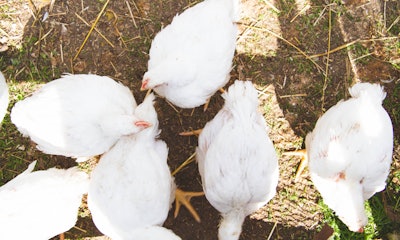
After several years of volatility — from broader market dynamics as well as some specific to the organic sector — organic producers might be looking to catch a break on feed costs this fall.
Prices for soybeans in particular soared after the U.S. ended its recognition of India's organic certification programs in 2021. That, in turn, prompted a more than 40% increase in U.S. organic soybean production, said Ryan Koory, vice president of economics for Mercaris, an Argus Media company.
But prices began to moderate this year, Koory said, falling from US$40 to US$45 per bushel to US$26 to US$27 per bushel. Lower prices seemed likely to curb producers' enthusiasm for soybeans, and reports from dealers of organic seed indicated a possible 15% decrease in soybean acreage accompanied by a 10% increase in corn acreage.
However, with U.S. producers now midway through the season, surveys of U.S. organic certifiers indicate that the change in organic cropping is less dramatic than projected. Organic soybean acres are down about 4%, Koory said, while organic corn acreage has increased 6%. Total organic acres have fallen about 2%, according to Mercaris.
Although it's still early enough in the season for the data to change, the numbers so far suggest that organic farmers are reluctant to let go of what had been highly profitable prices for soybeans, Koory said. There was a feeling earlier in the year, he said, that the market was a bit too pessimistic about the value of organic soy, particularly in light of rising production costs.
But those expectations have not panned out, and prices have continued to fall, Koory said. The U.S. already had a large supply of organic corn on hand coming out of last year, and with a reasonably large crop of corn and another large crop of soybeans on the way, both commodities should be readily available in the months to come — and at reasonable prices. Koory estimated organic soybeans could run US$20 to US$24 per bushel this fall, and corn US$8 to US$10 per bushel.
The potential for lower prices comes spring has prompted some talk of expansion among organic poultry producers, Koory said. Consumer demand for organic products remains strong, but high feed prices and market volatility left producers wary of growing their flocks. With feed prices beginning to normalize, Koory said, the poultry sector is feeling a bit more optimistic about the future.
“There is reason to think we will see more reasonable prices for organic commodities,” he said. “Hopefully, for everyone's sake, the next few years will be a little more quiet and we can all get back to business as usual.”













